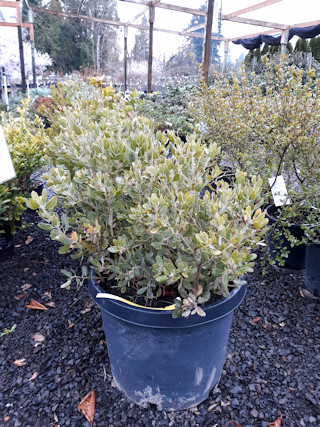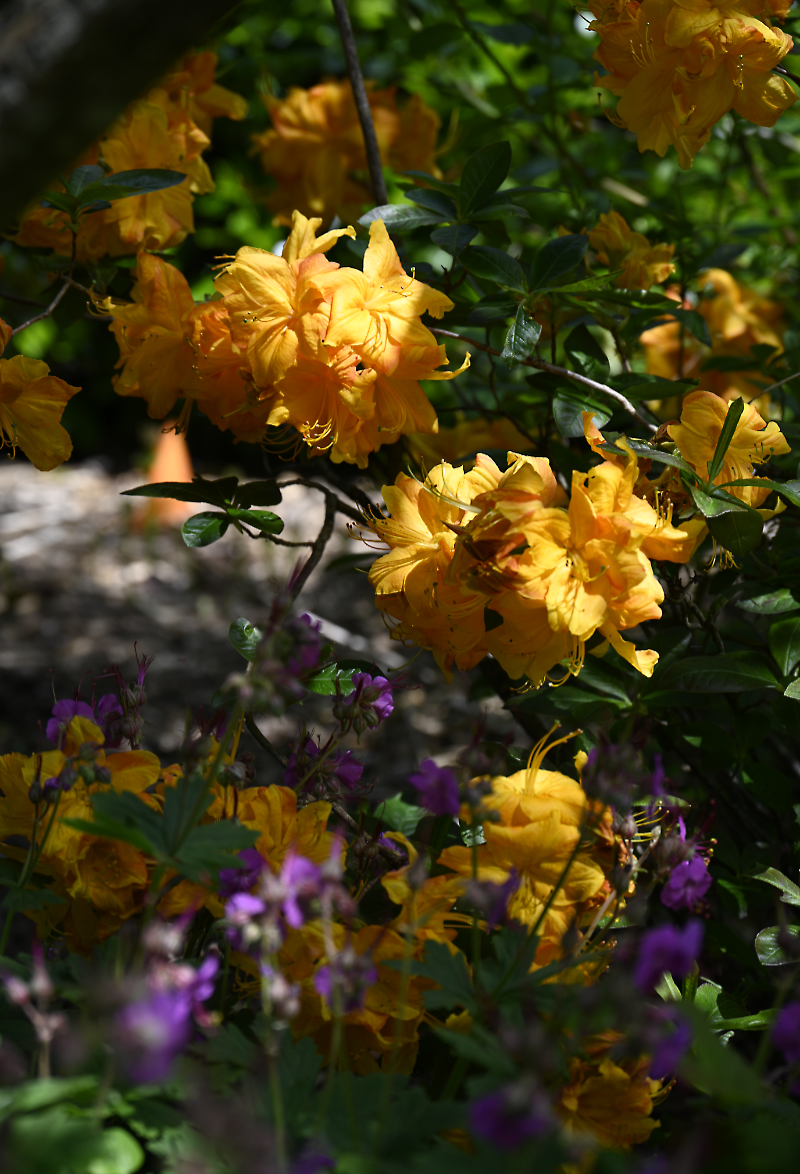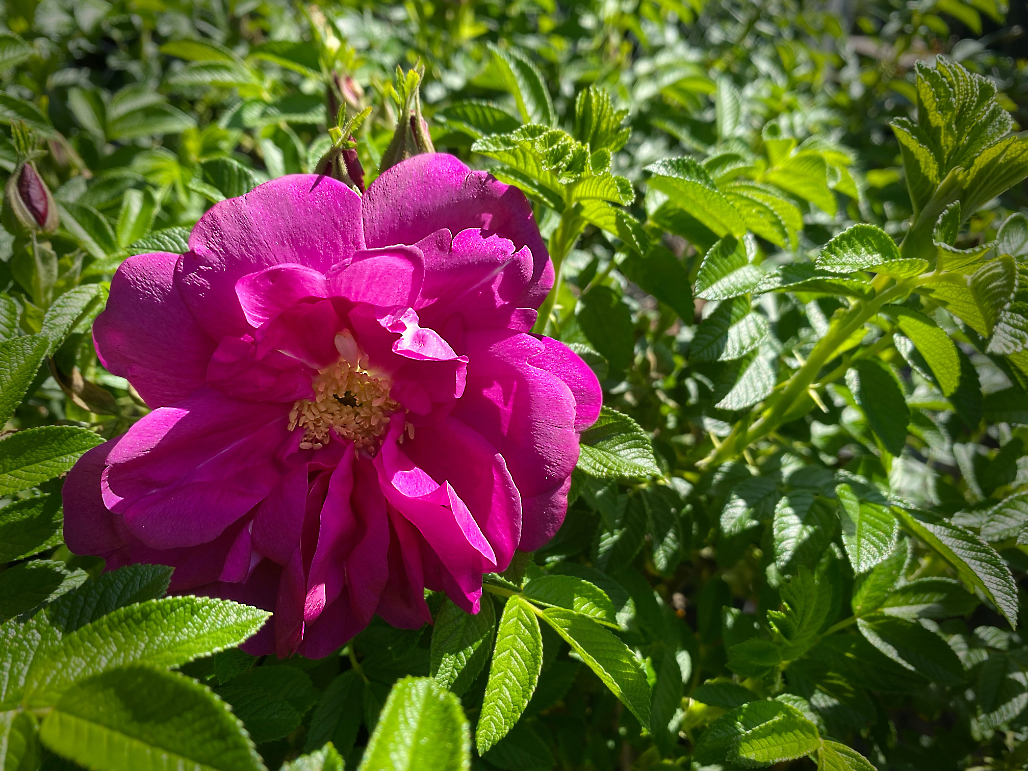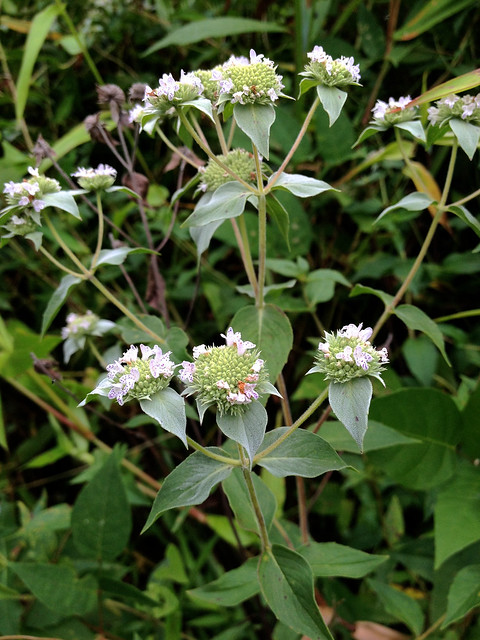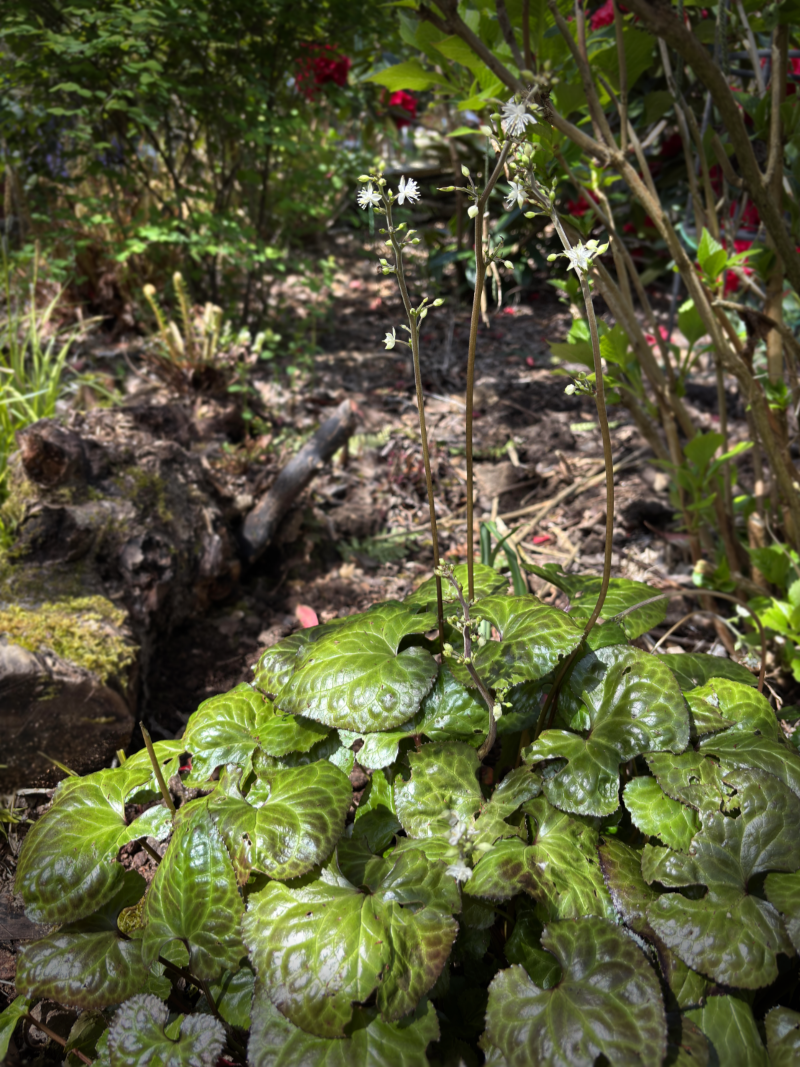Manzanita ‘Howard McMinn’
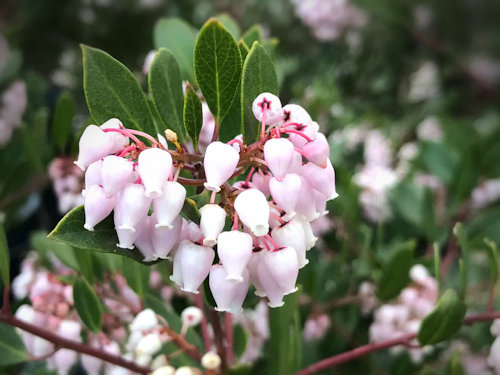 Are you looking for a carefree shrub that is pollinator-friendly, drought-tolerant, has beautiful architectural branching and boasts delicate bell-shaped blossoms in early spring? Look no further than the manzanitas, botanically known as Arctostaphylos.
Are you looking for a carefree shrub that is pollinator-friendly, drought-tolerant, has beautiful architectural branching and boasts delicate bell-shaped blossoms in early spring? Look no further than the manzanitas, botanically known as Arctostaphylos.
Native to the west coast, these plants fit perfectly into the landscape as they thrive in winter-wet and summer-dry growing conditions. There are a multitude of species and you are probably most familiar with the groundcover one known as “kinnikinnik”. The larger shrub varieties are not seen as often in our nursery but we now have a limited supply in large containers for $99.99.
‘Howard McMinn’ manzanita (Arctostaphylos densiflora ‘Howard McMinn’) is one of the oldest named and cultivated manzanitas available, first marketed in 1955 in California. It is a choice evergreen shrub with striking mahogany colored bark that becomes more pronounced with age. The leaves are glossy green. The delicate clusters of flowers appear in late winter and last for six to eight weeks. The flowers are followed by berries that are loved by birds, hummingbirds and butterflies. The word “manzanita” is derived from the Spanish for “little apple”.
The manzanitas are beautifully architectural shrubs with curving branches. ‘Howard McMinn’ will eventually reach six feet high and wide so it needs a large space. Full sun is preferred but high shade is tolerable. They do well on slopes or as specimen shrubs. They can also be used for hedging. Tip pruning will increase their density and limit the size.
These plants like our native soil and do not need additional soil ammendments. In fact, they will not like it if you make the soil richer. Sandy soils are fine too. They do not like wet soils. Excellent drainage is a must. Once established, they manage well with no additional water during the summer months.
Manzanitas also do quite well in containers as long as you do not over water. Use a basic potting mix such as Edna’s Best and apply organic fertilizer in early spring. Water only when the soil feels dry.

